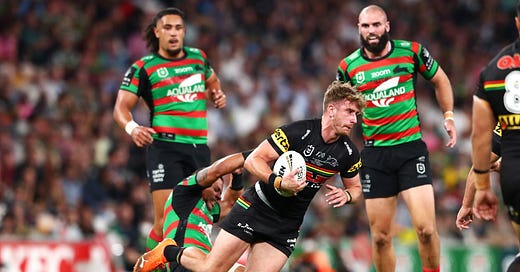The NRL keeps playing fast and loose with head injuries
PLUS: Kane Williamson cap giveaway, a guest contributor to Midweek Book Club and more Ashes sniping.

One of the more troubling aspects in the wash-up of the NRL season is the continuing game of Russian roulette league plays with head injuries.
In the first minutes of the grand final South Sydney centre Dane Gagai copped a hip to the head, had…
Keep reading with a 7-day free trial
Subscribe to The Bounce to keep reading this post and get 7 days of free access to the full post archives.



